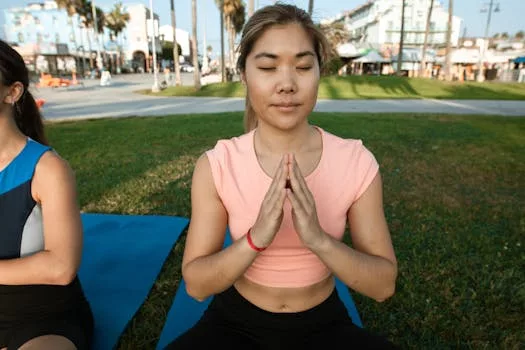
Unlocking Inner Peace: Effective Mindfulness Meditation Techniques
Takeaways: Mindfulness meditation is a powerful tool for enhancing mental clarity, reducing stress, and improving overall wellbeing. This article explores several effective techniques, including breath awareness, body scan, and loving-kindness meditation. Embrace these practices to cultivate a deeper sense of presence and tranquility in your life.
In today’s fast-paced world, many of us are searching for ways to find calm and clarity amid the chaos of daily life. Mindfulness meditation has emerged as an effective practice that not only promotes relaxation but also enhances mental focus and emotional stability. In this article, we will explore several mindfulness meditation techniques that can help you navigate through stress and cultivate a greater sense of wellbeing.
What is Mindfulness Meditation?
Mindfulness meditation is the practice of focusing one’s attention on the present moment while acknowledging and accepting one’s thoughts, feelings, and bodily sensations without judgment. This practice allows individuals to develop a greater awareness of their thought processes, leading to improved emotional regulation and reduced anxiety.
1. Breath Awareness Meditation
Breath awareness is one of the simplest yet most powerful mindfulness meditation techniques. It involves focusing your attention on your breath, observing each inhalation and exhalation. Here’s how to practice it:
- Find a Comfortable Position: Sit or lie down in a comfortable position. Ensure that your back is straight, and your body is relaxed.
- Close Your Eyes: Gently close your eyes to minimize distractions and turn your focus inward.
- Focus on Your Breath: Begin to notice your breath. Feel the air entering your nostrils, filling your lungs, and then flowing out. Notice the rise and fall of your chest or abdomen.
- Let Thoughts Come and Go: If your mind starts to wander, gently acknowledge the thoughts and then return your focus to your breath. This is a natural part of the practice.
- Practice Regularly: Start with just a few minutes a day and gradually increase the duration as you become more comfortable with the practice.
Breath awareness meditation helps to anchor you in the present moment and can greatly reduce feelings of anxiety and stress.
2. Body Scan Meditation

- Lie Down Comfortably: Find a quiet space and lie down on your back with your arms at your sides and legs extended.
- Take a Few Deep Breaths: Begin with a few deep breaths, allowing your body to relax with each exhale.
- Start the Scan: Begin at the top of your head and gradually move your attention down through your body. Notice any sensations, tension, or discomfort in each area.
- Release Tension: As you focus on each part of your body, consciously relax any areas of tension. Imagine breathing into that area and releasing the discomfort.
- Complete the Scan: Continue down to your toes, then take a moment to notice how your entire body feels in the present moment.
The body scan meditation is excellent for promoting relaxation and can help you develop a deeper connection to your body.
3. Loving-Kindness Meditation

- Find a Comfortable Position: Sit comfortably with your eyes closed.
- Begin with Yourself: Silently repeat phrases of goodwill towards yourself, such as “May I be happy, may I be healthy, may I be safe, may I live with ease.”
- Extend to Others: After a few minutes, think of someone you care about and repeat the phrases for them. Gradually extend your wishes to others, including acquaintances, those you may have conflicts with, and ultimately, all beings.
- Embrace the Feelings: Allow the feelings of love and kindness to fill your heart, and notice how this practice changes your emotional landscape.
Loving-kindness meditation fosters a sense of connection and compassion, helping to dissolve feelings of isolation and negativity.
4. Mindful Walking

- Choose Your Path: Find a quiet space where you can walk back and forth, or a peaceful outdoor area.
- Focus on Your Steps: Begin to walk slowly, paying attention to the sensations in your feet as they make contact with the ground. Notice the weight shifting from one foot to the other.
- Engage Your Senses: As you walk, be aware of the sights, sounds, and smells around you. Fully immerse yourself in the experience of walking.
- Maintain Your Breath: Coordinate your breath with your steps, inhaling for a few steps and exhaling for a few steps.
Mindful walking is a great way to integrate mindfulness into your daily life, promoting physical health while cultivating a sense of present-moment awareness.






